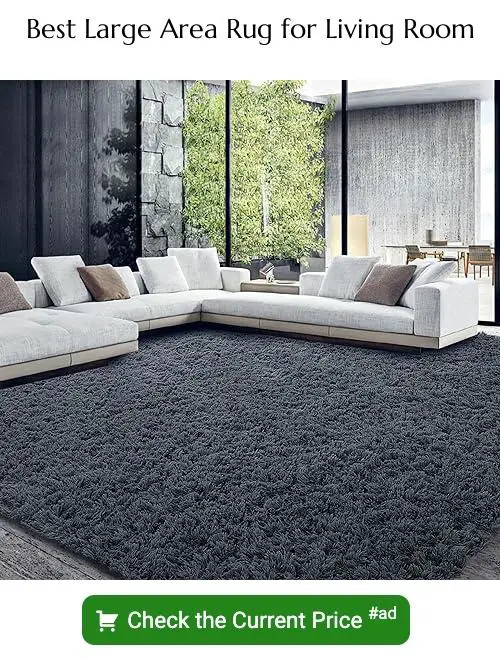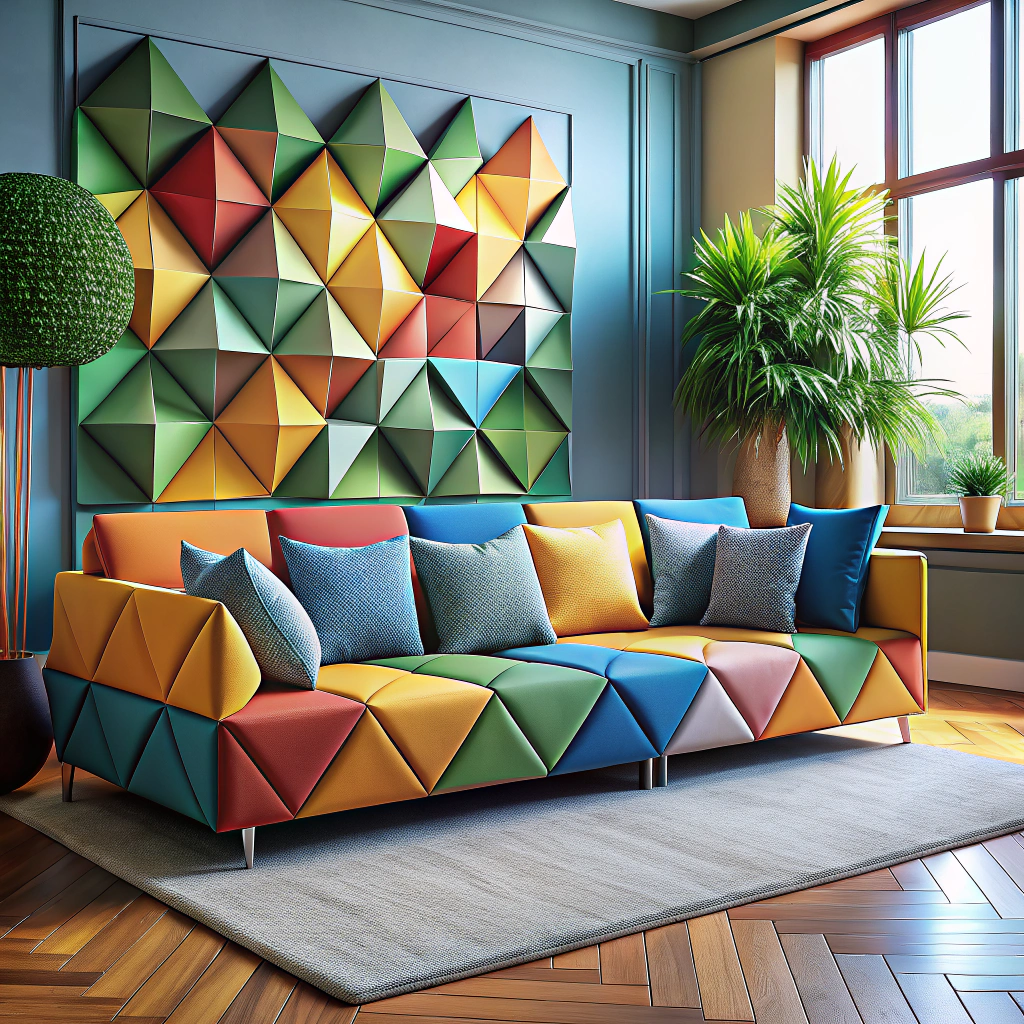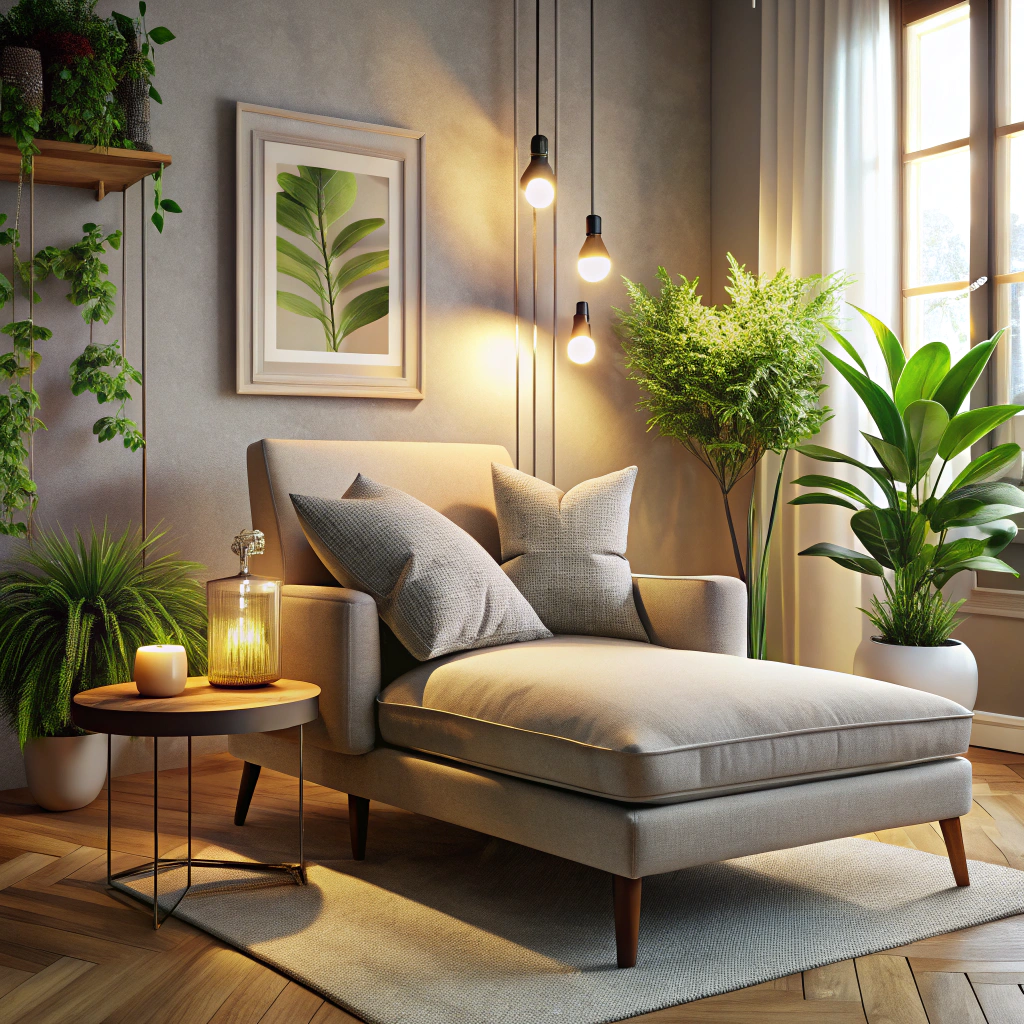Last updated on
Discover the perfect rug size to complement your couch and elevate your living space, as we guide you through key factors and expert tips in this comprehensive blog.
Are you tired of your living room feeling incomplete? Have you ever wondered why something just doesn’t feel right about the space? It could be that your rug is the wrong size for your couch. Choosing the right size rug for your furniture can make all the difference in creating a comfortable and cohesive living area.
In this article, we will guide you through the process of selecting the perfect rug size for your couch, ensuring that your living room feels complete and inviting. So let’s dive in!
Table of Contents
Rug Size Basics

Before we dive into the specifics of selecting a rug size for your couch, let’s start with some basics. The first thing to consider is the function of your living space.
Do you use it primarily for entertaining guests or as a cozy spot to relax and watch TV? This will help determine how much floor space you need to cover with your rug.
Another important factor is the size of your room. A larger room can accommodate a bigger rug, while smaller spaces require more modest sizes that won’t overwhelm the area.
It’s also essential to think about traffic flow in and out of the room when choosing a rug size. You don’t want people tripping over an oversized carpet or struggling to move chairs around on one that’s too small.
Measuring Your Couch
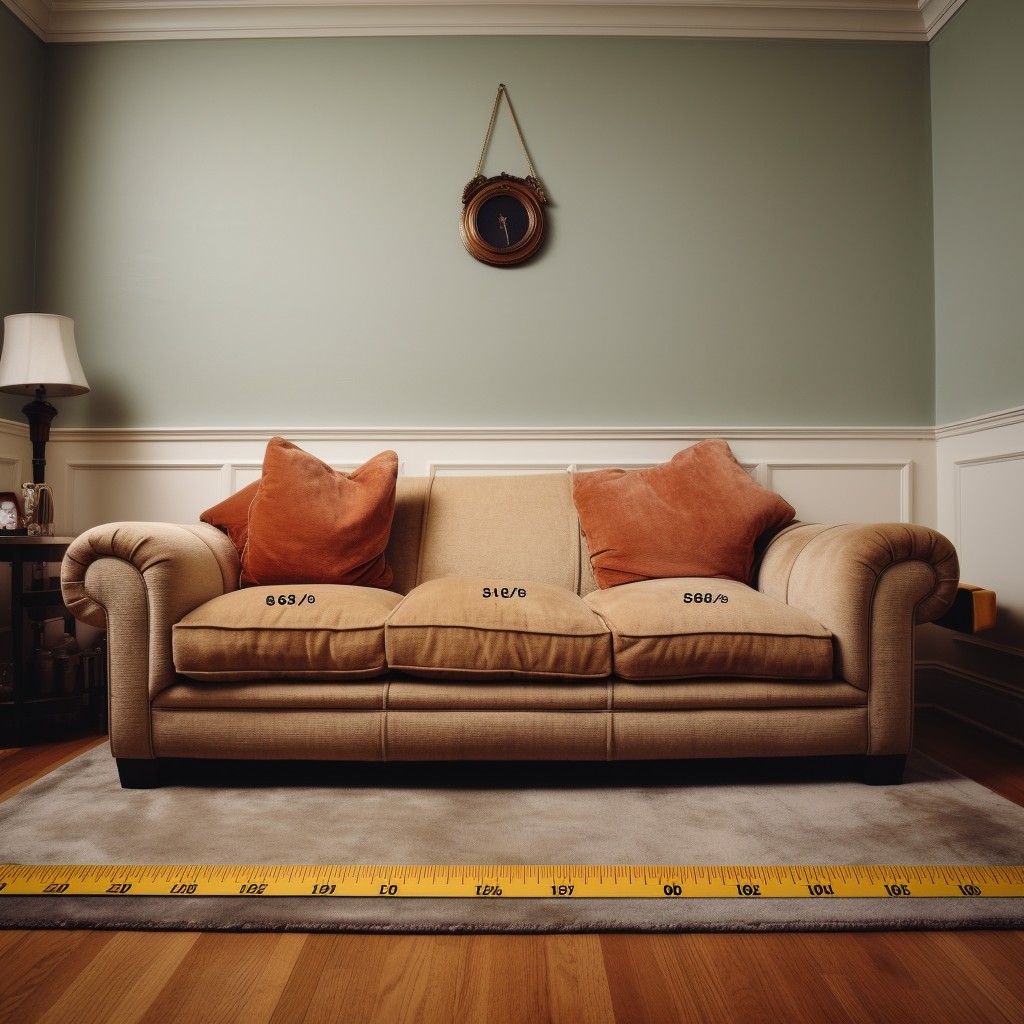
Measuring your couch is a crucial step in determining the perfect rug size that will complement and enhance your living space. Start by measuring the length of your sofa from one armrest to another, then measure its width from front to back.
If you have an L-shaped sectional or a curved sofa, take measurements of each section separately.
It’s important not only to consider the dimensions of your couch but also its position in relation to other furniture pieces and walls within the room. Take note if there are any obstructions such as coffee tables or side tables that may affect how much floor space is available for a rug.
Couch and Rug Size Relationship
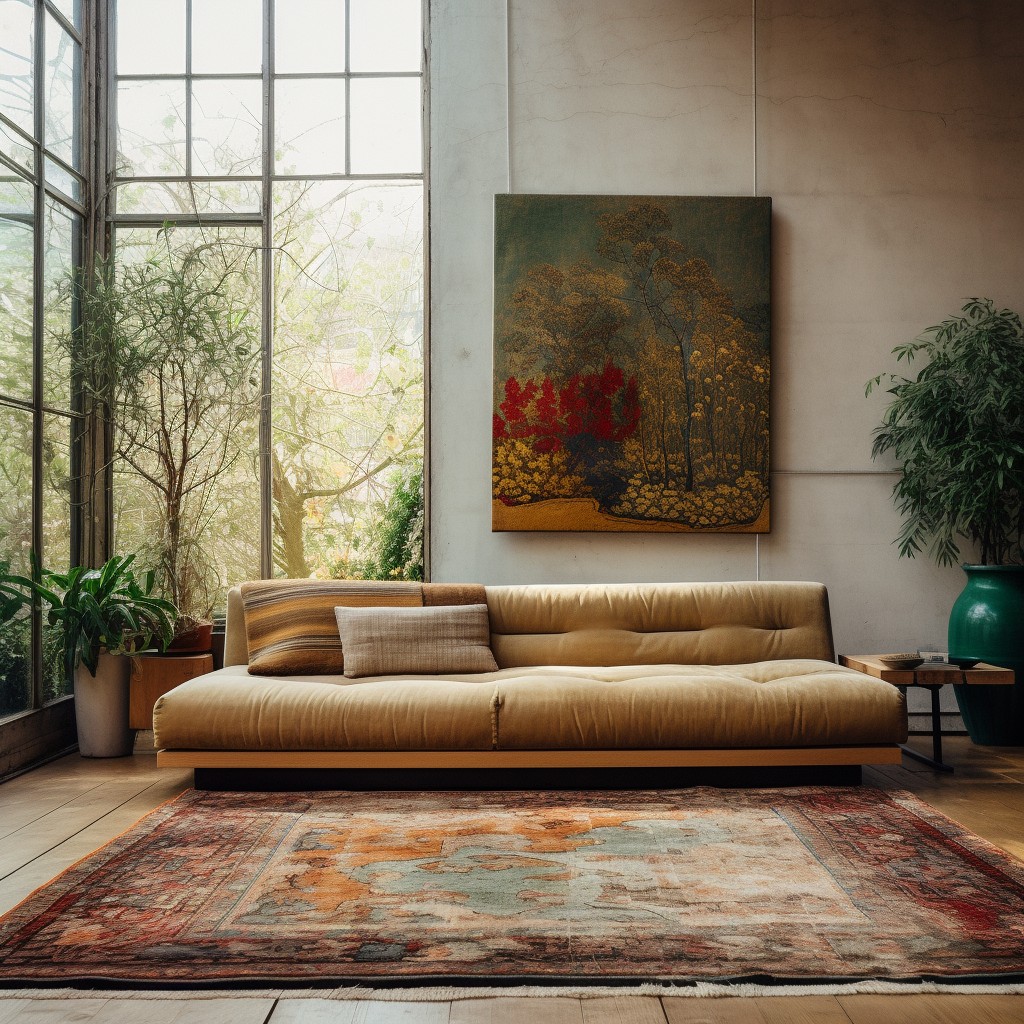
The right-sized rug can anchor the room, while an ill-fitting one can make it feel disjointed. When selecting a rug for your couch, consider the proportions of both pieces of furniture to ensure they complement each other.
A general rule of thumb is that the front legs of your sofa should be on the rug while its back legs remain off it. This creates balance and helps define seating areas within larger rooms.
If you have a sectional or L-shaped sofa, you may need multiple rugs to create separate zones.
Another factor to consider when choosing a rug size for your couch is how much floor space you want around it. A smaller area rug will leave more exposed flooring around the edges, making small spaces appear larger; however, this may not work well with large sofas as they require bigger rugs to maintain proportionality.
Selecting the Right Rug Size
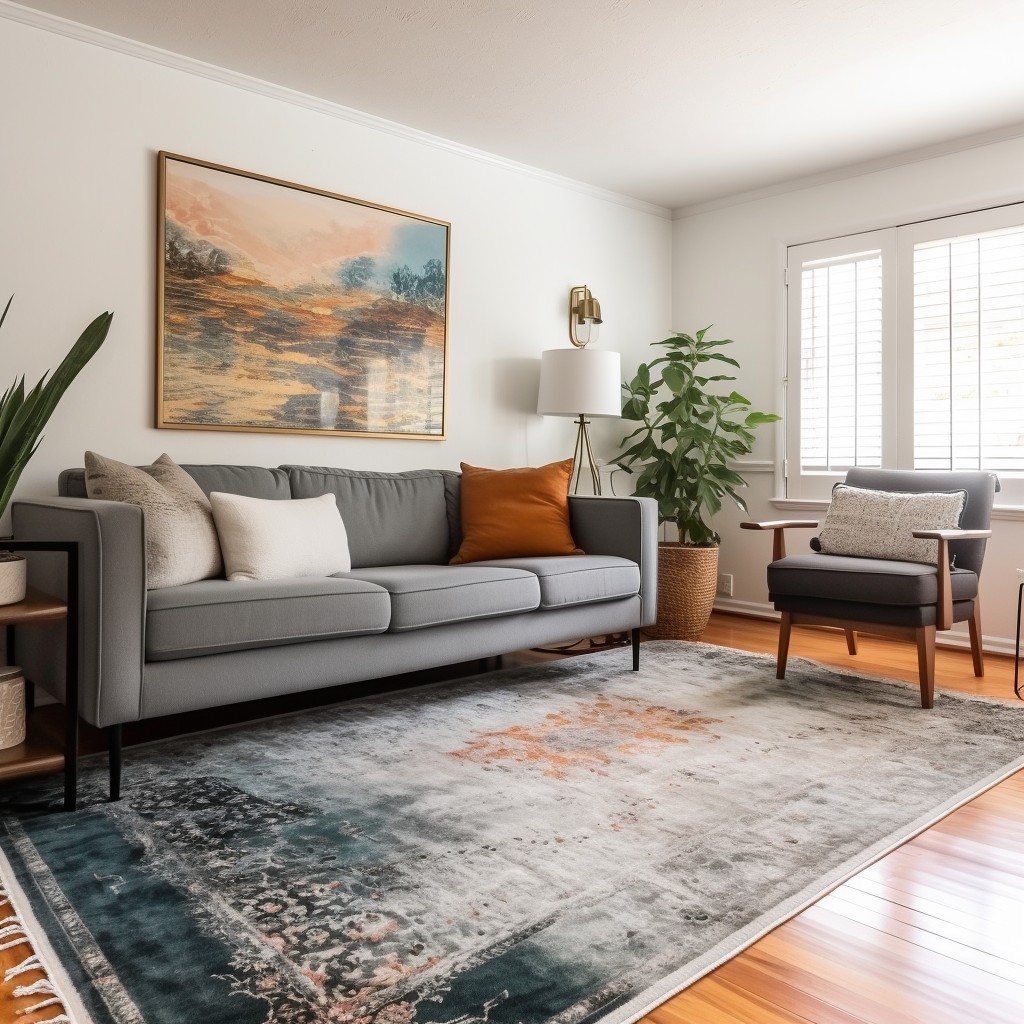
First and foremost, you want to ensure that the rug is large enough so that all of your furniture can fit comfortably on top of it. This creates a cohesive look and helps anchor the space.
To determine what size rug you need, start by measuring your couch. You’ll want to measure both the length and width of your sofa or sectional as well as any accompanying chairs or tables in order to get an accurate idea of how much floor space needs coverage.
Once you have these measurements in hand, use them as a guide when shopping for rugs. Keep in mind that larger rugs tend to work better than smaller ones since they provide more visual balance within a room.
Another important factor is proportionality – make sure that the scale between your furniture pieces and area rug feels harmonious with one another; otherwise, things may feel off-balance visually speaking!
Rug Proportions
A rug that is too small can make your living room feel disjointed and incomplete, while a rug that is too large can overwhelm the space and make it feel cluttered. To ensure you get the right proportion of rug to couch, consider measuring both pieces of furniture before making any purchases.
One rule of thumb when choosing a rug size is to aim for at least six inches of exposed floor around all sides of your furniture. This will help create balance in the room and prevent any awkward gaps or overlaps between your couch and area rugs.
Another important factor in determining proper proportions is considering how much space you have available in your living area. If you have a smaller living room with limited floor space, opt for a smaller-sized area rug that still allows enough clearance around all sides of your sofa.
On the other hand, if you have ample square footage available or an open-concept layout where multiple seating areas are present within one larger space – consider investing in several different sized rugs throughout each section as this will help define each individual zone while maintaining visual continuity throughout.
Living Room Layouts
The way in which you arrange your furniture can have a significant impact on how the space feels and functions. There are several popular living room layouts that homeowners tend to use, including L-shaped, U-shaped, and symmetrical arrangements.
For an L-shaped layout with a sectional sofa or two sofas facing each other at a 90-degree angle, consider using one large rug that covers both seating areas. This will help unify the space while creating visual interest.
In contrast, if you have a U-shaped arrangement with three separate seating areas (such as two sofas and an armchair), opt for multiple smaller rugs instead of one large one. This approach helps define each area while still maintaining cohesiveness throughout the entire space.
If symmetry is important in your design aesthetic or if you have matching chairs flanking either side of your couches – choose a rectangular rug that fits snugly between all pieces of furniture without leaving any gaps.
Small Couch Rug Sizes
A rug that is too large can make your living room feel cramped and cluttered. When selecting a rug for your small couch, consider choosing one that is slightly smaller than the width of your sofa or loveseat.
This will create an illusion of more space in the room while still providing comfort underfoot.
Another option for smaller spaces is to use multiple rugs instead of one large area rug. Layering two or three smaller rugs can add texture and interest to your living area without overwhelming it with pattern or color.
When placing a small couch on top of an area rug, ensure at least two legs are on the carpet while keeping enough floor visible around its perimeter so as not to make it look like wall-to-wall carpeting.
Large Couch Rug Sizes
A small rug can make your living room feel disjointed and unbalanced. When selecting the right size for your large couch, consider choosing an oversized area rug that extends beyond the edges of your furniture.
This will create a cohesive look and anchor the space.
A general rule of thumb when selecting an area rug for larger furniture pieces is to ensure at least 6-12 inches of floor space between the edge of the carpet and walls or other furniture pieces in order to maintain balance within your living room layout.
When shopping for rugs online or in-store, be sure to measure both your couch dimensions as well as available floor space before making any purchases. Large rugs are often more expensive than smaller ones so it’s important not only to get one with proper proportions but also one made from high-quality materials that will last longer over time.
Rug Shapes and Couches
The shape of your rug can have a significant impact on how well it complements your furniture and overall living room design.
Rectangular rugs are the most common choice for living rooms with rectangular-shaped couches. However, if you have an L-shaped sectional sofa or a curved sofa, then consider using a round or oval shaped rug to complement its unique form.
Round rugs work particularly well in small spaces where they can help create visual interest without overwhelming the room’s layout. They’re also great options when placed under circular coffee tables that sit in front of curved sofas.
Ultimately, selecting a complementary shape between your couch and rug is all about creating balance within space while highlighting each piece’s unique features.
Rug Materials and Textures
The right material can add warmth, comfort, and style to your living space. Wool is a popular choice for rugs due to its durability and softness underfoot.
It also has natural stain-resistant properties that make it easy to clean.
If you’re looking for something more affordable than wool but still want a plush feel, consider synthetic materials like nylon or polyester. These materials come in various textures that mimic the look of natural fibers such as sisal or jute.
For those who prefer eco-friendly options, there are plenty of sustainable rug materials available on the market today such as bamboo silk or recycled plastic bottles turned into yarns.
Texture is another crucial factor when choosing a rug material since it affects both how comfortable your feet will be walking on them and how they’ll look with other furniture pieces in the room. Shaggy rugs provide an ultra-soft feel while flatweave rugs offer durability without sacrificing style.
Rug Styles
From traditional Persian rugs to modern geometric designs, the possibilities can be overwhelming. However, choosing a rug style that complements your couch and overall living room aesthetic is crucial in creating an inviting space.
If you have a neutral-colored couch or prefer minimalist decor, consider opting for a bold patterned rug as the focal point of your living area. Alternatively, if you have colorful furniture or busy wallpaper on your walls, choose a solid-colored rug with subtle texture to balance out the space.
Another popular trend in recent years has been vintage-inspired rugs with faded colors and intricate patterns. These types of rugs add character and warmth to any room while still maintaining versatility in terms of matching different furniture styles.
Rug Colors and Patterns
The right rug can add depth and dimension to your living space while complementing the colors of your furniture. If you have a neutral-colored couch, you may want to choose a bold or patterned rug that adds interest and texture.
On the other hand, if you have a brightly colored or patterned couch, it’s best to opt for a solid-colored rug that complements rather than competes with the sofa.
When selecting colors for your area rug, keep in mind that lighter shades tend to make small spaces feel larger while darker hues create warmth and coziness in larger rooms. Patterns can be used strategically; geometric designs work well with modern decor styles while floral prints lend themselves more towards traditional settings.
Matching Rug and Couch Colors
The right color combination can create a harmonious and inviting living space, while the wrong one can make your room feel disjointed or overwhelming. One of the easiest ways to ensure that your rug complements your couch is by choosing colors from within the same family.
For example, if you have a beige or cream-colored sofa, consider pairing it with an ivory or light brown rug. If you have a gray couch, opt for shades of silver or charcoal in your area rug.
For those who prefer bold hues like reds and blues on their furniture pieces should choose rugs with similar tones but slightly different shades.
Another option is to select complementary colors that are opposite each other on the color wheel such as blue-orange pairings which work well together when done correctly.
Creating Balance
A rug that is too small or too large for your couch can throw off the entire look and feel of the space. To create a balanced look, consider the size and shape of both your couch and rug.
If you have a smaller couch, opt for a smaller rug that will fit snugly underneath it without overwhelming the space. On the other hand, if you have a larger sectional sofa or multiple pieces of furniture in one area, choose an appropriately sized rug that will anchor all elements together.
Consider how much floor space should be visible around your furniture pieces when selecting a rug size. Leaving some exposed flooring around each piece creates visual breathing room while still maintaining cohesiveness between all elements in the room.
Rug Placement Tips
The right placement can make all the difference in creating a cohesive and inviting living space. Here are some tips to help you get started:
1. Centered under the couch: Placing your rug centered under your couch is a classic look that works well in most living room layouts.
2. All furniture on top of the rug: If you have additional seating or tables surrounding your sofa, placing them all on top of the same area rug creates a unified look.
3. Front legs only: For smaller rugs or if budget is an issue, place just the front legs of each piece of furniture onto it.
- Layering rugs: Consider layering two different sized rugs together for added texture and visual interest while still keeping everything grounded with one larger base underneath.
- Diagonal Placement: This technique adds depth and dimensionality to any room by positioning both pieces at an angle instead of parallel lines
Layering Rugs for Style
It’s also an excellent solution if you have a smaller rug that doesn’t quite fit the size of your couch. By layering two or more rugs, you can create a unique look that adds warmth and style to any space.
When layering rugs, it’s important to consider the colors, patterns, and textures of each rug. You want them to complement each other without clashing or overwhelming the room.
Start by selecting one larger rug as your base layer – this should be slightly bigger than your couch so that all furniture legs sit on it comfortably. Then choose another smaller accent rug with complementary colors or patterns for added interest.
Place the accent rug at an angle over one corner of the base layer so that both are visible but not overlapping too much. Alternatively, place it in front of part of the sofa where there is no seating area such as under a coffee table.
Layered rugs work well with neutral-colored sofas because they allow for more creativity when choosing different colored/textured layers while still maintaining balance in color scheme throughout space.
Rug Padding Essentials
Rug pads are essential for protecting both your floors and rugs from wear and tear. They also provide extra cushioning underfoot, making them more comfortable to walk on.
When selecting a rug pad, make sure that it is the same size as your area rug or slightly smaller. This will prevent any bunching or slipping of the carpet over time.
There are different types of padding materials available in the market such as felted wool, rubberized non-slip material or synthetic fibers like polyester which can be used depending upon personal preference and budget constraints.
Standard Rug Sizes for Living Rooms
These sizes have been determined based on common living room dimensions and furniture arrangements. Standard rug sizes include 5’x8′, 6’x9′, 8’x10′, and 9’x12′.
However, if your living space is unique or has an irregular shape, a custom-sized rug may be necessary.
It’s important to note that these standard sizes work best when the entire seating area of your couch is placed on top of the rug. This creates a cohesive look while also providing comfort underfoot as you sit or walk around in the space.
Keep in mind that larger rugs tend to make a room feel more spacious while smaller rugs can create intimacy within a seating area. Layering multiple rugs with different textures and patterns can add depth and interest to any space.
Furniture Legs Should Sit On the Rug
This creates a cohesive look and helps anchor both pieces of furniture together. If you have a smaller rug, consider placing just the front legs of your couch on it for an added touch of style.
However, if you have a larger room with ample space for more than one seating area or multiple pieces of furniture, feel free to experiment with different placement options such as layering rugs or using multiple rugs throughout the space.
Remember that while there are general guidelines when it comes to selecting and placing rugs in relation to your couches and other furnishings, ultimately what matters most is creating a comfortable living environment that reflects your personal style preferences.
Caring for Your Rug
Regular maintenance will help keep your rug looking its best and extend its lifespan. Vacuuming is essential to remove dirt and debris that can accumulate over time, but be sure to use a vacuum with adjustable suction settings so as not to damage the fibers.
Avoid using harsh chemicals or cleaning products on your rug as they can cause discoloration or damage.
If spills occur, blot them immediately with a clean cloth or paper towel until all moisture has been absorbed. Do not rub the spill as this may spread it further into the fibers of the rug.
It’s also recommended that you rotate your rugs every six months in high-traffic areas such as living rooms so that wear is distributed evenly across all parts of the carpet.
By following these simple tips for caring for your new area rug, you’ll ensure that it remains beautiful and functional for years to come!
FAQ
How do you size a rug for a couch?
To size a rug for a couch, ensure it is 6-8 inches wider than the sofa on both sides, and typically run the rug the length of the sofa, while maintaining a 18-36 inch walkway between large furniture pieces, depending on your living room space.
What is the rule for a rug under a sofa?
The rule for a rug under a sofa is to have at least 3 inches of rug behind the front legs of the furniture, ensuring a large enough rug to avoid squeezing furniture close together.
How much bigger should rug be compared to sofa?
The rug should ideally be 30 – 50 inches wider than the sofa, allowing for an extra 15 – 25 inches on each side.
Is 5×7 rug too small for living room?
A 5×7 rug can be suitable for a living room if you prefer having your legs just off the furniture; otherwise, consider larger sizes like 8×10 or 9×13.
What factors should be considered when choosing the ideal rug size for a living room with a couch?
When choosing the ideal rug size for a living room with a couch, consider factors such as room dimensions, furniture arrangement, and intended use of the space.
How can the room layout and furniture arrangement affect the appropriate rug size for a space featuring a sofa?
The room layout and furniture arrangement, such as a sofa, can affect the appropriate rug size by determining the needed coverage to properly anchor the furniture and create a cohesive aesthetic in the space.
Are there specific rug shapes that work better with certain couch styles or room dimensions?
Yes, specific rug shapes complement certain couch styles and room dimensions, making the space more visually appealing and harmonious.
